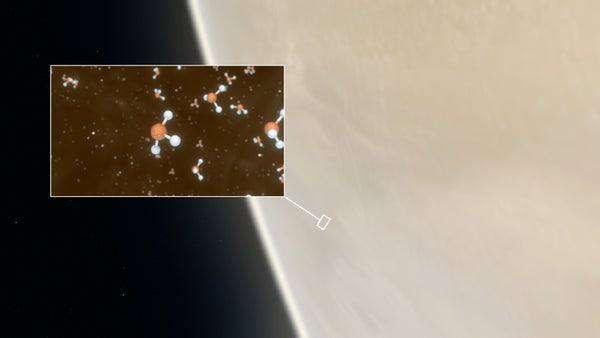The detection of a possible sign of life in Venus’ clouds is just the beginning.
On Monday (Sept. 14), researchers announced that they’d spotted the fingerprint of phosphine in Venus’ atmosphere, at an altitude where temperatures and pressures are similar to those here on Earth at sea level.
On our planet, phosphine is produced only by microbes and by human industrial activity, as far as we can tell. So, finding the gas on another world, in an environment that astrobiologists had already flagged as potentially habitable, is exciting news indeed.
On supporting science journalism
If you're enjoying this article, consider supporting our award-winning journalism by subscribing. By purchasing a subscription you are helping to ensure the future of impactful stories about the discoveries and ideas shaping our world today.
But it’s unclear at the moment what the new results actually mean, discovery team members stressed. Venusian microbes may be emitting the phosphine, but it’s also possible that the stuff is being generated by exotic chemical reactions that we don’t understand, and that have nothing to do with life.
“We have what could be a biosignature, and a plausible story about how it got there,” Pete Worden, executive director of the nonprofit Breakthrough Initiatives, said in a statement. “The next step is to do the basic science needed to thoroughly investigate the evidence and consider how best to confirm and expand on the possibility of life.”
The Breakthrough Initiatives will help scientists take that next step, by funding a team to study the phosphine find and its potential implications in detail. The researchers will be led by MIT planetary scientist Sara Seager, an expert on exoplanet atmospheres and potential biosignatures who’s also a member of the phosphine discovery team.
“The group will investigate the scientific case for life and analyze the technical challenges of an exploratory mission in the event that such evidence proves compelling," Breakthrough Initiatives representatives said in the statement, which did not reveal how much money will be disbursed or how long the study will last.
“We are thrilled to push the envelope to try to understand what kind of life could exist in the very harsh Venus atmosphere and what further evidence for life a mission to Venus could search for,” Seager said in the same statement.
To give you an idea of how harsh that atmosphere is: Venusian clouds are composed primarily of sulfuric acid, which would likely kill Earth-like microbes quickly unless they were surrounded by some sort of protective shell, Seager said during a press conference yesterday.
But Venus life, if it exists, does not have to be Earth-like. Microbes may have arisen independently on the second rock from the sun, in which case they’d be very different than the water-dependent organisms on our planet. (And if Venus microbes do indeed represent a “second genesis,” we could be pretty sure that life is common throughout the universe.)
Seager will be the newly announced project’s principal investigator (PI). Joining her on the leadership team are:
Janusz Petkowski of MIT (deputy PI);
Chris Carr of the Georgia Institute of Technology;
Bethany Ehlmann of the California Institute of Technology;
David Grinspoon of the Planetary Science Institute, a long-time and leading advocate for the idea that Venus’ clouds are a possible abode for life;
Pete Klupar of the Breakthrough Initiatives (chief engineer).
The new project is a natural fit for the Breakthrough Initiatives, a five-year-old series of science programs founded and funded by tech billionaire Yuri Milner that aims to help answer some of humanity’s biggest questions.
Other projects funded by the Initiatives include Breakthrough Listen, a $100 million effort to scan the cosmos for signs of extraterrestrial intelligence, and the $100 million Breakthrough Starshot, which is developing technology to explore nearby exoplanets up close with tiny robotic probes.
“Finding life anywhere beyond Earth would be truly momentous,” Milner said in the same statement. “And if there’s a non-negligible chance that it’s right next door on Venus, exploring that possibility is an urgent priority for our civilization.”
Copyright 2020 Space.com, a Future company. All rights reserved. This material may not be published, broadcast, rewritten or redistributed.
